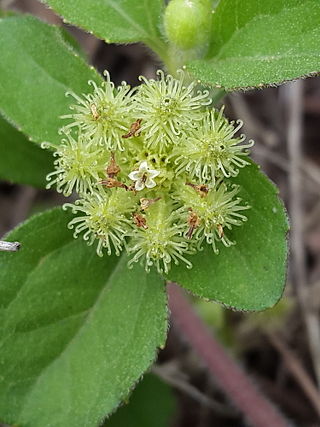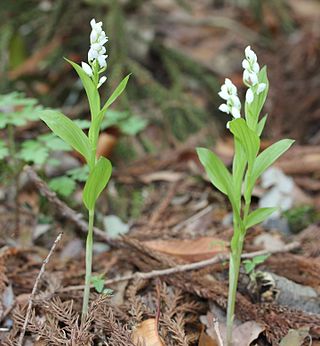
Crassocephalum is a genus the common names of whose members include ragleaf, thickhead, and bologi. Several species are raised as leaf vegetables and used for medicine, especially in West Africa. Similar to Senecio, but differing in never having ray florets. A calyculus of short bracts is present. The genus is typically thistle-like in appearance, but all parts are soft and not spiny.

Pleurotus eryngii is an edible mushroom native to Mediterranean regions of Europe, the Middle East, and North Africa, but also grown in many parts of Asia.

Pleurotus is a genus of gilled mushrooms which includes one of the most widely eaten mushrooms, P. ostreatus. Species of Pleurotus may be called oyster, abalone, or tree mushrooms, and are some of the most commonly cultivated edible mushrooms in the world. Pleurotus fungi have also been used in mycoremediation of pollutants, such as petroleum and polycyclic aromatic hydrocarbons.

Pier Andrea Saccardo was an Italian botanist and mycologist. He was also the author of a color classification system that he called Chromotaxia. He was elected to the Linnean Society in 1916 as a foreign member. His multi-volume Sylloge Fungorum was one of the first attempts to produce a comprehensive treatise on the fungi which made use of the spore-bearing structures for classification.

Acanthospermum australe is a South American species of herbaceous plants first described as a species in 1758.

Irpex lacteus is a common crust fungus distributed throughout temperate areas of the world. It is the type of the genus Irpex. Irpex lacteus is considered a polypore, but depending on growth conditions it can also produce a hydnoid hymenophore. Due to this variability and abundance of the species it has been described as a new species to science numerous times and subsequently has an extensive synonymy. The complete genome sequence of Irpex lacteus was reported in 2017.

Puccinia recondita is a fungus species and plant pathogen belonging to the order of Pucciniales and family Pucciniaceae.

Cypella is a genus of herbaceous, perennial and bulbous plants in the family Iridaceae. It is distributed in South America, from Peru and Brazil to Northern Argentina. The genus name is likely derived from the Greek word kyphella, meaning "hollow of the ear", and alludes to the shape of the inner tepals.

Solenomelus is a genus of South American species of flowering plants in the family Iridaceae. They are very closely allied to Sisyrinchium with rhizomes, flowers with a perianth tube and a style that is not divided and a single capitate stigma. The genus name is derived from the Greek words solen, meaning "tube", and melos, meaning "member".
Pleurotus tuber-regium, the king tuber mushroom, is an edible gilled fungus native to the tropics, including Africa, Asia, and Australasia. It has been shown to be a distinct species incapable of cross-breeding and phylogenetically removed from other species of Pleurotus.

Cochemiea barbata is a small cactus native to Chihuahua, Sonora, and Durango, with the common name greenflower nipple cactus. It is found in mountainous locations in the Sierra Madre Occidental. It has delicate white to pink flowers. The fruits are red and oblong. They are edible but too small to be of much food value to humans.

Carlos Berg or Friedrich Wilhelm Karl Berg was an Argentinian naturalist and entomologist of Latvian and Baltic German origin.
Lentinula guarapiensis is a species of agaric fungus in the family Omphalotaceae that is found in Paraguay. Originally described by Carlos Luigi Spegazzini in 1883 as Agaricus guarapiensis, it was moved to the genus Lentinula by David Pegler in 1983. It is only known from the type collection.

Cocculus orbiculatus, the queen coralbead, is a species of woody vines. It is found from India east to Java.
Chascolytrum brizoides is a species of grass in the family Poaceae. It is found in Buenos Aires, Uruguay, Rio Grande do Sul and Biobio.

Cephalanthera erecta, the erect cephalanthera, is a species of terrestrial orchid. It is found in China, Japan, Korea, Kuril Islands, Bhutan, Assam and eastern Himalayas.

Pleurotus abieticola is an edible species of fungus in the family Pleurotaceae, described as new to science by mycologists R.H. Petersen & K.W. Hughes in 1997. It grows on rotten wood of Picea in subalpine forests dominated by it. It has been reported first in far‐eastern Russia, and then northeastern China and northwestern Russia. It can be cultivated. Phylogenetic research has shown that while it belongs to P. ostreatus clade, it forms its own intersterility group.

Lentinus levis is a species of edible fungus in the family Polyporaceae. It was described by Miles Joseph Berkeley and Moses Ashley Curtis in 1853 and given its current name in 1915 by William Murrill. As a saprotroph, it can be cultivated. In nature it grows in subtropical to tropical climate. It is recognized and sometimes collected as a food by Huichol people of Mexico, although they prefer eating other, less chewy mushrooms. For a long time thought to be a member of Pleurotus genus, it has been moved to genus Lentinus.















